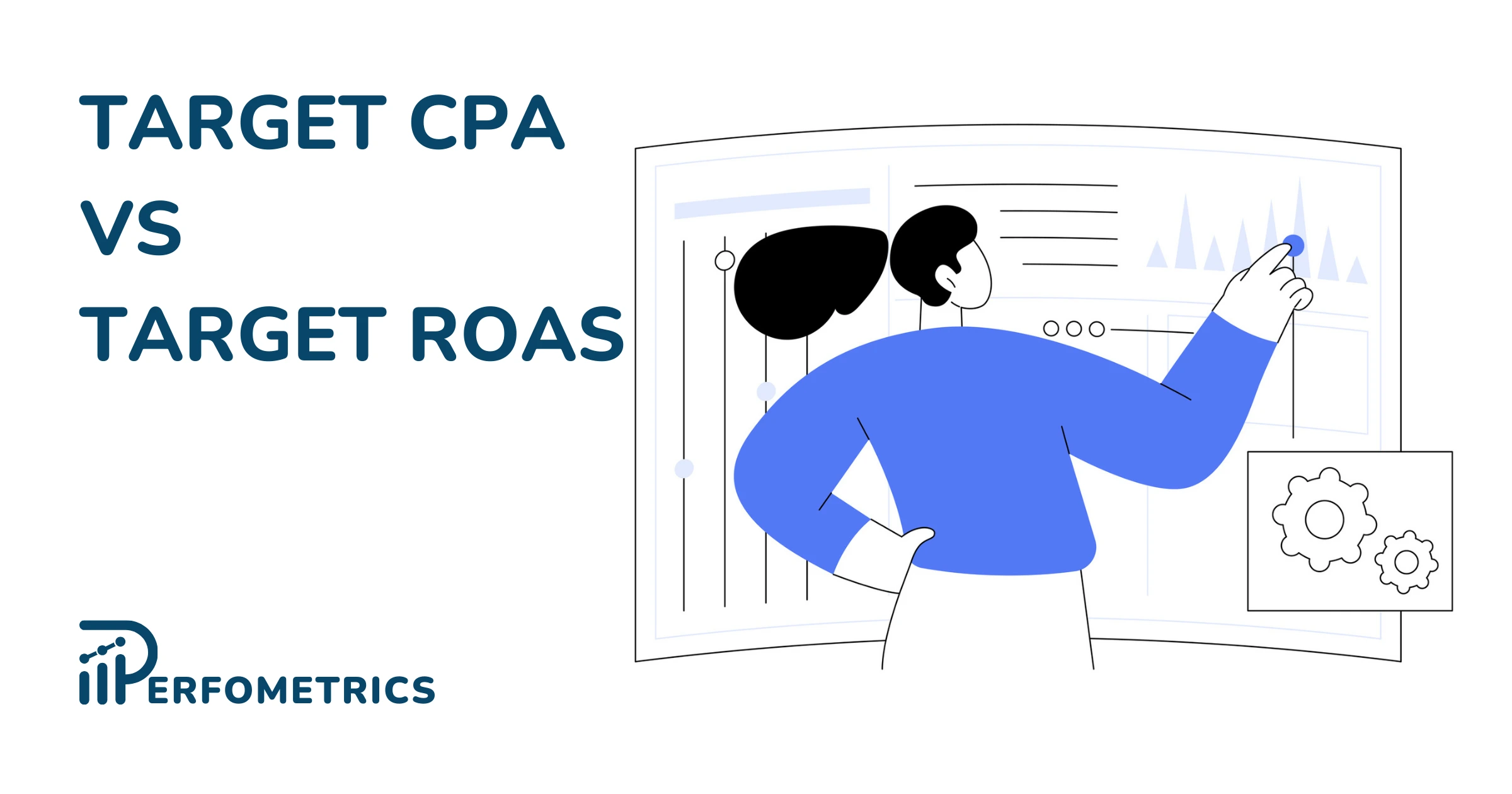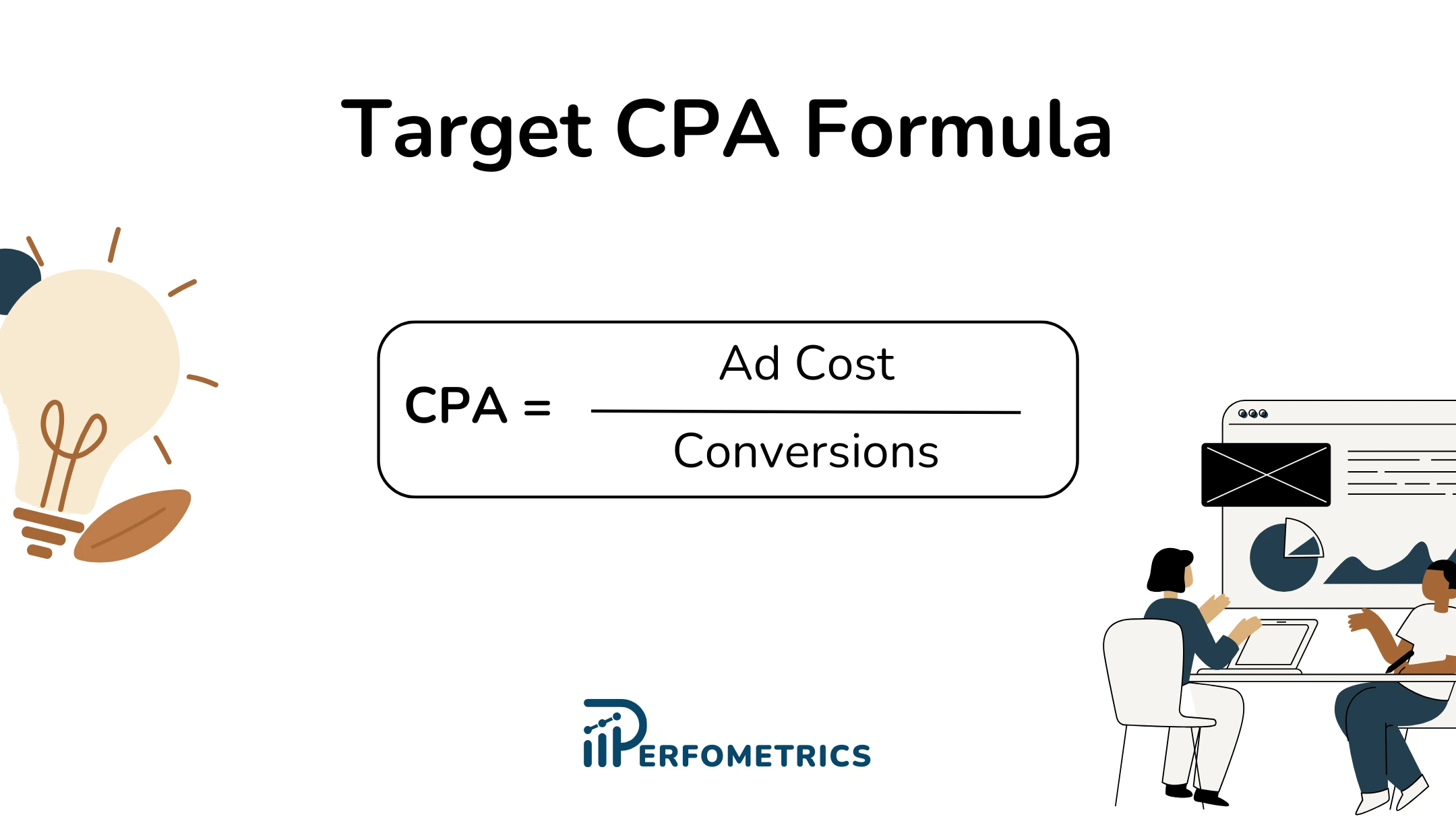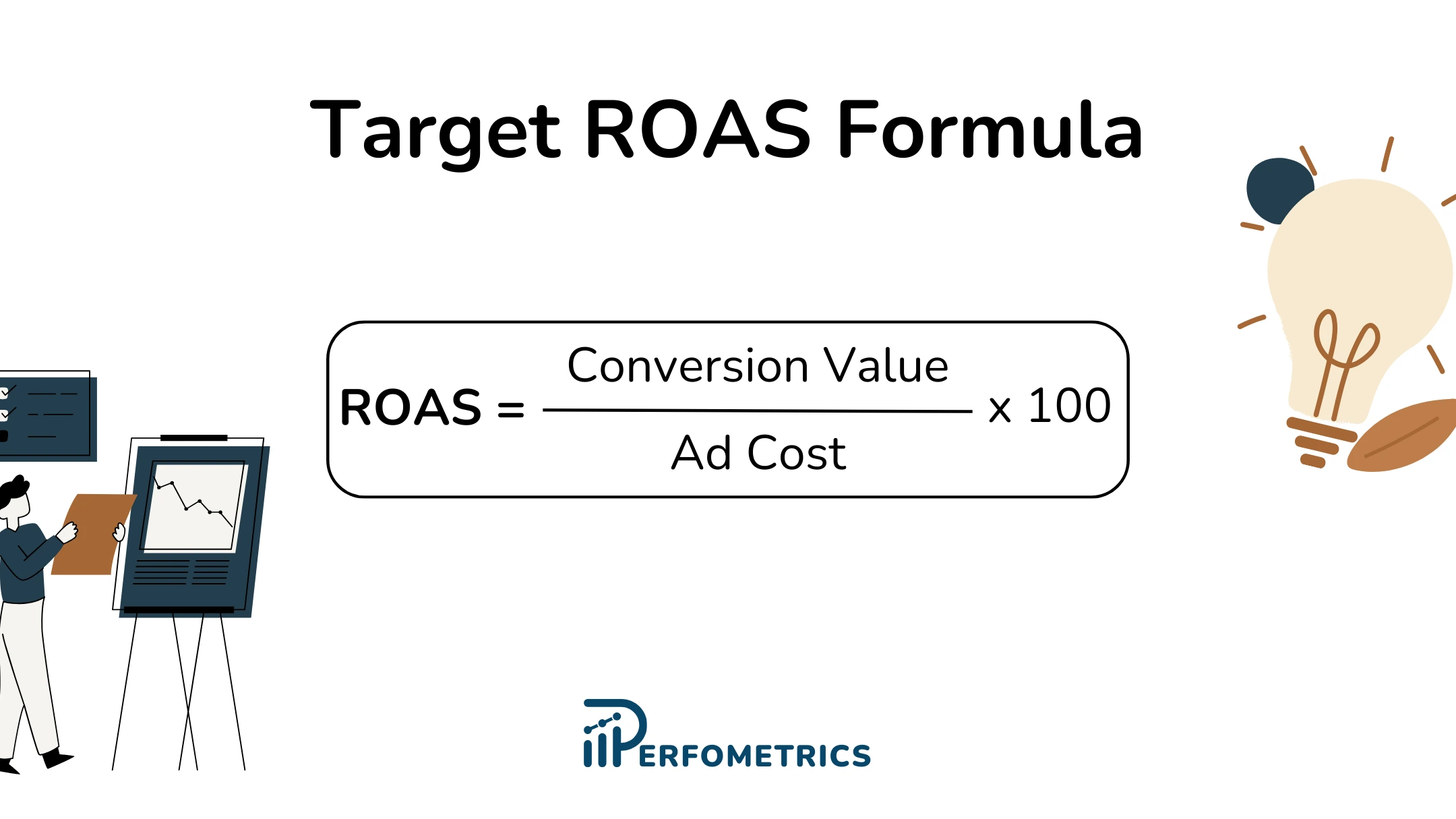Target CPA vs Target ROAS – They Aren’t The Same, Be Wise

Target CPA vs Target ROAS, which one is the right for you? They are both bid strategies used in digital advertising campaigns, particularly in platforms like Google Ads.
These bidding strategies in Google Ads are designed to help you optimize your campaigns by driving relevant traffic and maximizing return on investment (ROI). While they may seem similar at first glance, there are distinct differences between target CPA and target ROAS.
What is Target CPA and Target ROAS?
Target CPA focuses on achieving a specific cost-per-acquisition (CPA) goal for each conversion. On the other hand, target ROAS stands for “return on ad spend” and aims to maximize revenue rather than focusing solely on keeping acquisition costs within a specific range.
- Target CPA is the average amount you are willing to pay for each desired action, such as a purchase or sign-up. With a target CPA strategy in Google Ads, you can set a maximum limit you are willing to spend per conversion. The bid strategy then automatically adjusts bids in real-time to increase or decrease the likelihood of achieving the desired CPA.

- Target ROAS is calculated by dividing the revenue generated from an ad campaign by the cost of that campaign. With the target ROAS bidding strategy in Google Ads, you can set a desired return on ad spend as a percentage value, indicating how much revenue they want to generate for every dollar spent on advertising.

The difference between target CPA and target ROAS lies in their objectives: while target CPA focuses on controlling acquisition costs at a predetermined level, target ROAS emphasizes generating higher returns from ad investments.
Both target CPA and target ROAS are automated bidding strategies used in digital advertising campaigns. Choosing between these bid strategies requires careful consideration of your goals and priorities regarding acquisition costs versus overall ROI.
How to Calculate Target CPA?
Calculate your target CPA in 4 simple steps:
- Utilize Historical or Business Data:
- Examine data from previous campaigns.
- Consider factors like conversion rates and costs.
- Consider your business profitability.
- Determine Your Maximum Cost per Conversion:
- Consider your business profitability.
- Consider average order value, profit margins, and customer lifetime value.
- Set the maximum amount you’re willing to pay for one conversion.
- Set a Realistic Target CPA:
- Align your target CPA with your business goals.
- Ensure it’s feasible and sustainable.
- Review suggestions based on campaign history and conversion data.
- Monitor and Adjust:
- Continuously track your target CPA’s performance.
- Carefully assess Google Ads recommendations.
- Make adjustments that suit your specific business needs.
By following these steps and considering factors such as average order value, profit margins, and customer lifetime value alongside campaign goals, you can effectively calculate and manage your target CPA to optimize your bidding strategy for online advertising.
How to Calculate Target ROAS?
Calculate your target ROAS in 5 simple steps:
- Ensure Conversion Values:
- Make sure that the conversion tracking in Google Ads is working correctly and is reliable.
- Assure that there are values associated with your conversions. These values represent the revenue generated by each conversion and can be either static or dynamic.
- Utilize Historical or Business Data:
- Examine data from previous campaigns.
- Consider factors like conversion rates and costs.
- Consider your business profitability.
- Determine your Minimum ROAS:
- Recognize that Target ROAS is centered on maximizing return on investment (ROI) rather than the cost of acquiring customers, unlike Target CPA.
- Consider your business profitability.
- Consider average order value, profit margins, and customer lifetime value.
- Set Your Target ROAS Goal:
- Align your target CPA with your business goals. Ensure it’s feasible and sustainable.
- For instance, if you aim for a 500% ROAS and your conversion value is $50, your target ROAS is set at 500% ($50/$10) meaning for every $1 spent you aim to generate $5 of revenue.
- Monitor and Adjust:
- Continuously track your target ROAS’s performance.
- Carefully assess the Google Ads Optimization Score and recommendations.
- Make adjustments that suit your specific business needs.
By following these steps, you can effectively implement the Target ROAS bidding strategy to optimize your advertising campaigns based on revenue generation.
Difference Between Target CPA and Target ROAS
The fundamental understanding of the difference between CPA (Cost Per Acquisition) and ROAS (Return on Ad Spend) is crucial in order to make informed decisions regarding automated bidding strategies in advertising campaigns, particularly within the realm of Google Ads.
While both metrics play a vital role in evaluating the success of a campaign, they differ significantly in their approach and focus.
| Aspect | Target CPA | Target ROAS |
|---|---|---|
| Objective | Cost per Acquisition | Return on Ad Spend |
| Focus | Cost efficiency | Revenue generation |
| Bidding Goal | Maintain a set CPA | Achieve a specific ROAS |
| Formula | CPA = (Ad costs / Number of Conversions) | ROAS = (Revenue / Ad Costs) |
| Conversion Tracking | Requires only conversion data | Requires conversion and revenue data |
| Optimization | Maximizes conversions | Maximizes revenue |
| Recommended Use | Lead generation | E-commerce |
While both metrics are aimed at optimizing your advertising spending, they have distinct objectives and calculations.
Best Practices For Using Automated Bid Strategies
When it comes to using automated bid strategies, there are several best practices that can help optimize your advertising campaigns and achieve better results.
These strategies, such as target CPA and target ROAS, leverage the power of machine learning algorithms to adjust bids in real-time based on various factors such as user behavior, ad performance, and conversion data.
Here are some best practices to consider when using automated bid strategies:
- Start with a Clear Objective: Before implementing an automated bidding strategy, it’s crucial to define your campaign objective clearly. Whether you aim for maximum conversions at a specific cost or maximize your return on ad spend (ROAS), understanding your goal will guide you in selecting the appropriate bid strategy.
- Gather Sufficient Conversion Data: Automated bidding strategies rely heavily on historical conversion data to make accurate predictions and adjust bids accordingly. To ensure the successful implementation of these strategies, it’s essential to have enough conversion data available with Google Ads.
- Note: If your Google Ads campaign type is new or lacks sufficient data for the selected bid strategy, it might be more effective initially to manually manage bids until enough meaningful data has been collected.
- Make Small Adjustments: Strategies such as target CPA and target ROAS depend a lot on their machine learning algorithms that take into account many different touchpoints. Big changes such as significant, changes in the bid strategy of your Google Ads campaigns, budget adjustments, objectives changes, targeting modifications, or bid adjustments to your Google Ads campaigns can reset the campaigns’ algorithm, so stick with smaller adjustments at a time.
- Regularly Monitor Performance: While automated bid strategies can save time and effort by handling most of the bidding processes automatically, it’s still crucial to monitor their performance regularly. Keep track of key metrics such as CPA or ROAS and compare them against your predefined targets. If needed adjustments can be made by recalculating target CPAs or ROAS based on campaign goals or changing market conditions.
By following these best practices for using automated bid strategies in Google Ads campaigns, you can improve efficiency and achieve better results while saving time spent on manual bidding management. Leveraging automated bidding strategies like target CPA or target ROAS can significantly enhance your advertising efforts.
Our Final Thoughts
While both target CPA and target ROAS bid strategies can be effective in achieving different goals depending on your business objectives it’s important to choose wisely based on what matters most to your company—whether it is maintaining a certain acquisition cost with maximum efficiency (target CPA) or optimizing for revenue generation (target ROAS). campaigns.
The key difference between target CPA and target ROAS lies in their focus and dictates how your campaign performs and behaves:
- Target CPA emphasizes cost control per acquisition.
- Target ROAS centers around maximizing the revenue generated from ad spend.



